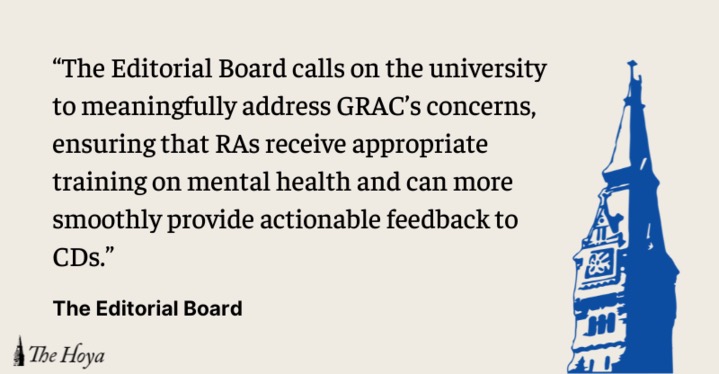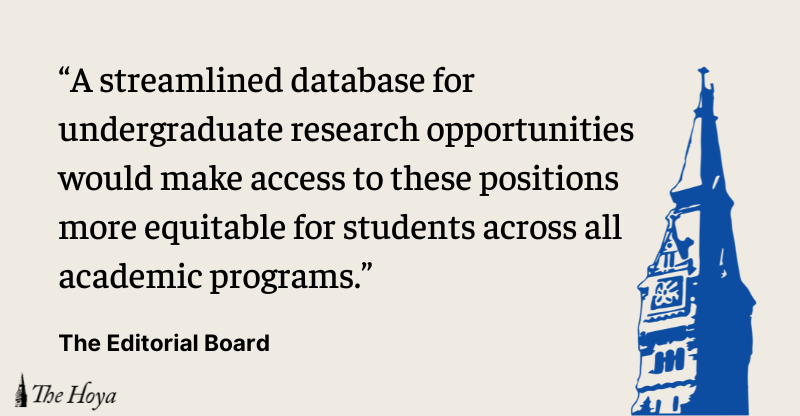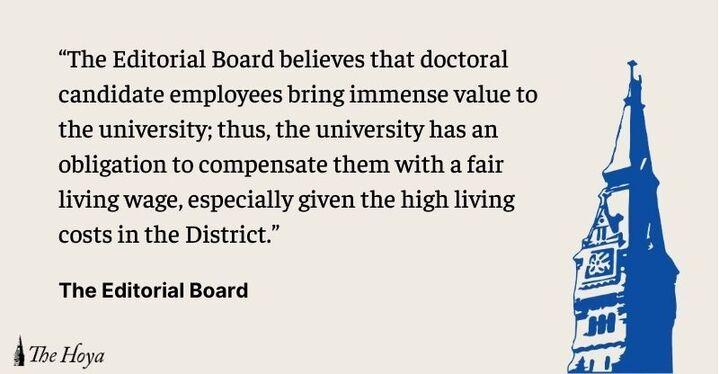Over two months after Georgetown University abruptly announced a transition to live registration for classes, the university registrar has failed to respond to pressing student concerns about the new process. Instead, it has abandoned students to grapple with the change on their own.
Georgetown’s implementation of the new system replaces preregistration despite the overwhelming opposition of students. In a 2016 referendum held by the Georgetown University Student Association senate, 83 percent of students voted to keep preregistration.
To ease an already difficult transition for students, the registrar should commit to addressing systemic flaws and increasing transparency in its proposed live registration process.
Under the current preregistration system, students have two weeks to leisurely submit their preferred schedules; Georgetown then finalizes schedules based on other student entries. Under the new live registration system, however, students will sign up for classes on a first-come, first-serve basis. This method means that students will compete for classes in real time, creating a cutthroat system.
Georgetown made the switch to live registration because the current course selection software will no longer support preregistration, according to a campuswide email sent by the registrar Dec. 6.
While Georgetown made the switch to live registration because of looming software limitations, the university should address solvable issues to make the transition bearable for students.
Georgetown must address systemic flaws within the limited process it has designed. Under the registrar’s proposed system, registration may begin for some students when they are in class, posing a problem for students in classes that do not allow laptops.
Additionally, students are not guaranteed placement in certain classes they need to graduate, study abroad or stay on track for their majors. Preregistration algorithms prioritized seats for these students, but under live registration, they will need to compete to attend these critical classes.
Though the registrar indicated at a Jan. 17 Hoya roundtable that it might implement waitlists or restrictive capacities for students with declared majors, these measures are still uncertain — administrators have not yet made a concrete decision.
Before the registrar can expect students to embrace live registration, it should first understand how it plans to implement the system.
The current system will also disadvantage freshmen. With registration set to begin during summer break for freshmen, students will have limited access to support, as deans and peer advisers may not be available to support all students. The lack of adviser availability will be especially acute for students in a different time zone.
In providing freshmen with sufficient support, Georgetown should replicate the live registration process at Princeton University, in which freshman registration occurs during New Student Orientation.
Though the switch to live registration may be unavoidable, as the university claims, Georgetown has failed to answer students’ urgent and legitimate concerns. Providing answers and correcting systemic flaws could mitigate the misinformation and anxiety that currently plague campus discussions on the topic.
Since last December’s ambiguous email, the registrar has made little effort to explain the new system to students.
A dearth of information on the registrar’s website has left students dependent on each other to try and find answers. At the January student-led roundtable, live registration was discussed, among a multitude of other issues. Similarly, the School of Foreign Service Academic Council created a form for students to ask questions about the process and plans to eventually release a one-page document with answers.
Students shouldn’t be responsible for making sense of the university’s unilateral decision to switch to live registration.
While Georgetown is unable to reverse its commitment to live registration, the university has a responsibility to ensure a smooth transition for students. The registrar should periodically and clearly communicate details to students.
Georgetown plans to use “posters, lawn signs and email communications to educate students on the new process,” according to Annamarie Bianco, associate vice president and university registrar. Two months since the announcement of live registration, however, students still have little information directly from the administration.
More than transparency, the university must also ensure students have adequate support. Deans and advisers should be available in open forum settings — rather than appointments — during the registration period to maximize student assistance and account for the fast-paced nature of live registration.
Still, it may be difficult for deans to advise students when critical aspects of the process have not yet been solidified.
Students did not welcome — or even expect — live registration. If the registrar seeks to smoothly transition away from preregistration, it must ease student frustrations by increasing transparency and correcting systemic flaws.
With graduation at stake in course selections, students take registration seriously. The university is long overdue in respecting student concerns and must start providing answers.
The Hoya’s editorial board is composed of six students and chaired by the opinion editor. Editorials reflect only the beliefs of a majority of the board and are not representative of The Hoya or any individual member of the board.













